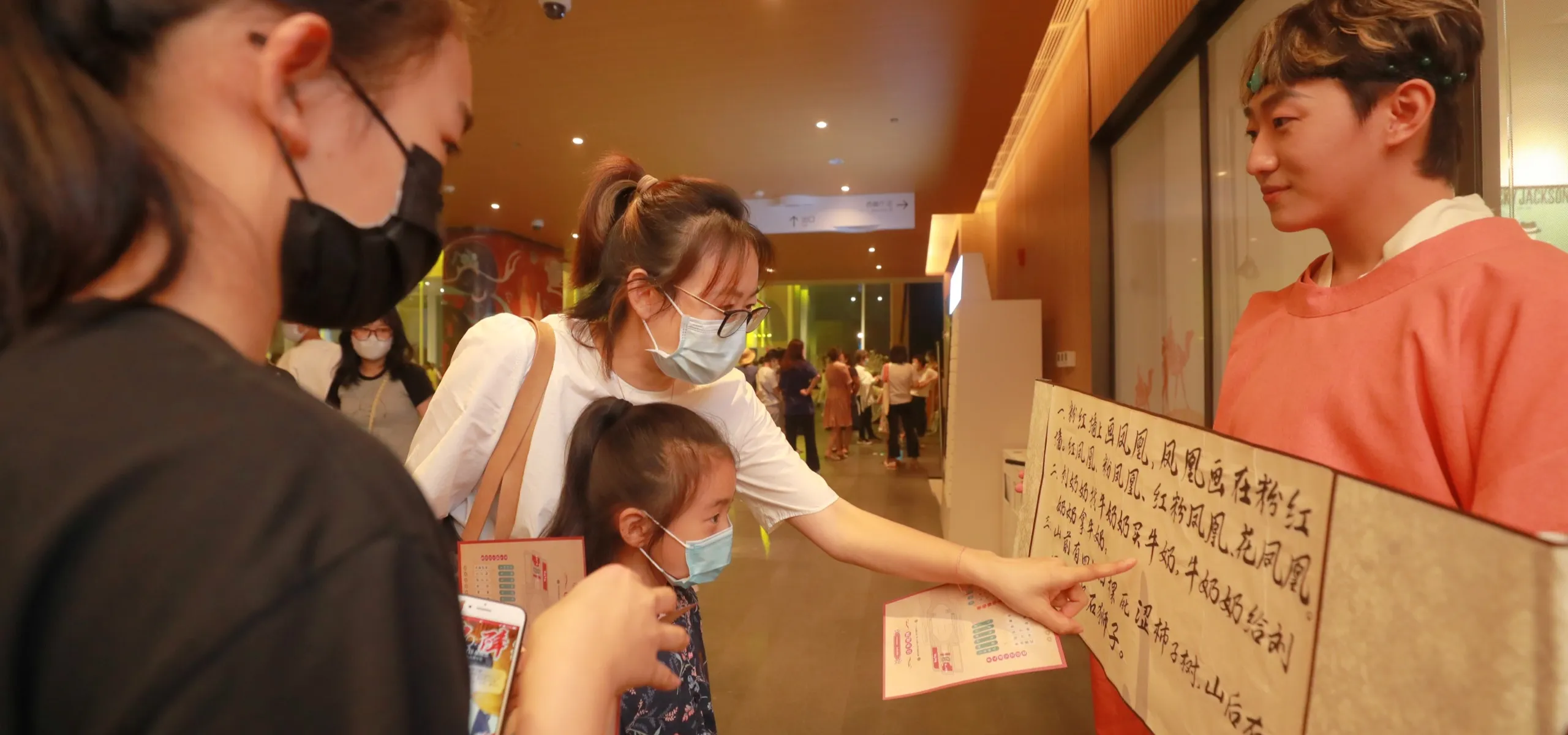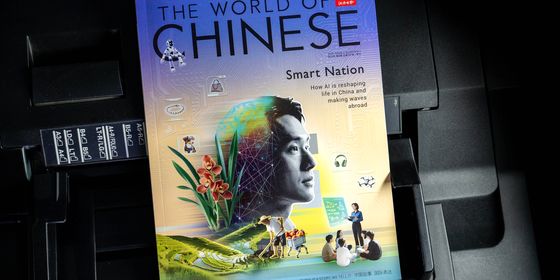Learn the history of Chinese tongue twisters, which were taught to aid speech therapy and spread folk wisdom in the past
Think you’ve mastered Chinese pronunciation? Try saying this phrase: “红鲤鱼与绿鲤鱼与驴 (Hóng lǐyú yǔ lǜ lǐyú yǔ lǘ, Red carp, green carp, and donkey).”
Learning a new language is challenging at the best of times, but most of all when you encounter tongue twisters. In Chinese, tongue twisters are called raokouling (绕口令), and typically use a lot of confusing homophones, alliteration, and repetition in order to be as hard to say as possible. Throughout history, poets, literati, and common people made up tongue twisters as creative exercises, forms of speech therapy, wise sayings, or simply for fun.
The oldest Chinese tongue twister can supposedly be traced back 5,000 years ago in the essay “Song of Slingshot (《弹歌》),” attributed to the legendary Yellow Emperor. It detailed how people in prehistoric times made slingshots and hunted, and goes, “断竹,续竹;飞土,逐宍 (Duàn zhú, xù zhú; fēi tǔ, zhú ròu, Break the bamboo and chop the bamboo to form a bow and arrow; shoot the arrow and chase the prey).” This phrase consists of several characters with the same initial consonants, the basic element of a tongue twister.
Given the fun in making complicated and musical rhymes, many poets and literati in ancient China were inspired to create tongue twisters. In the 5th century, there even emerged literary tongue twisters called kouchi shi (口吃诗) or “stammer poems,” a type of poem that uses a lot of alliterations. Some believe the name comes from the fact that people reciting the poem sound like they have a stutter, while others claim these poems were actually invented to cure speech problems, like stuttering. Poet Liu Houkun (刘厚坤) of the Ming dynasty (1368 — 1644) wrote a famous tongue twister poem named “Qixi (《七夕》),” which goes: “年年来念汝,两泪落牛郎 (Niánnián lái niàn rǔ, liǎng lèi luò Niúláng, Every year I come to miss you, while I shed tears like farm boy Niulang [who was separated from his beloved goddess Zhinü]).”
However, these deliberately abstruse works didn’t win favor among ordinary people, who made up folk tongue twisters with more down-to-earth themes. Many also commented on society and reflected folk wisdom. A popular tongue twister from the 1920s, titled “Field Snails and Mule (《螺蛳与骡子》),” criticized the idea of “every man for himself”; another called “Compensation for a Bowl (《赔钵钵》),” popular in the 1960s, promoted the spirit of sharing among people. See if you can say them both:
Field Snails and Mule
The man with a beard carried a load of field snails, and a hunchback rode a mule. The load of field snails hit the hunchback’s mule, while the mule stamped on the bearded man’s field snails. The bearded man asked the hunchback to compensate him for his field snails, while the hunchback wanted the bearded man to compensate him for his mule. The bearded man cursed the hunchback, the hunchback beat the bearded man, and the field snails climbed on the mule’s head to bite its nose.
胡子担了一担螺蛳,驼子骑了一匹骡子。胡子的螺蛳撞了驼子的骡子,驼子的骡子踩了胡子的螺蛳。胡子要驼子赔胡子的螺蛳,驼子要胡子赔驼子的骡子。胡子骂驼子,驼子打胡子,螺蛳也爬到骡子头上去啃鼻子。
Compensation for a Bowl
Your mother-in-law lent my mother-in-law a bowl, but my mother-in-law broke your mother-in-law’s bowl. My mother-in-law bought a bowl to return to your mother-in-law. Your mother-in-law didn’t want my mother-in-law to compensate her for her bowl, but my mother-in-law insisted on giving the bowl to your mother-in-law.
你婆婆借给我婆婆一个钵钵,我婆婆打烂了你婆婆的钵钵。我婆婆买来一个钵钵,还给你婆婆。你婆婆说什么也不要我婆婆赔钵钵,我婆婆硬要把买来的钵钵还给你婆婆。
Tongue twisters were also taught to children like nursery rhymes to help them learn to enunciate. In the 1890s, Guido Vitale, an Italian translator who worked in a consulate in Beijing, compiled Chinese children’s rhymes into a book called Chinese Folklore: Pekinese Rhymes (《北京童谣》), and included many tongue twisters like “Linglong Tower”:
Linglong Tower is tiny, and the tiny tower has 13 floors. There is a temple in front of the tiny tower. There is an old monk in the temple. The old monk is an abbot and has six disciples: one named Qingtouleng, another named Lengtouqing, another named Sengsengdian, another named Diandianseng, another named Benhuluba, and another named Bahuluben. Qingtouleng can play the chime stone, Lengtouqing can play the sheng pipes, Sengsengdian can play the flute, Diandianseng can chime the bells, Benhuluba can talk, and Bahuluben can read scriptures.
玲珑塔,塔玲珑,玲珑宝塔十叁层,塔前有座庙,庙内有老僧。老僧当方丈,徒弟有六人,一个叫青头楞,一个叫楞头青,一个叫僧僧头,一个叫点点头,一个是奔胡卢把,一个是把胡卢奔。青头楞会打磬,楞头青会捧笙,僧僧点会吹管,点点僧会撞钟,奔胡卢把会说话,把胡卢奔会念经。
For an additional challenge, see how fast you can say the following popular tongue twisters in Chinese:
The white stone tower is built with white stones. White stones built the white stone tower while the white tower was built with white stones. Once the white stone tower was finished, the stone tower was white and tall.
白石塔,白石搭。白石搭白塔,白塔白石搭。搭好白石塔,白塔白又大。
The pink wall is painted with a phoenix, the phoenix is painted on the pink wall. Red phoenixes, pink phoenixes, red pink phoenixes, and floral phoenixes.
粉红墙上画凤凰,凤凰画在粉红墙。红凤凰,粉凤凰,红粉凤凰花凤凰。
Eight hundred pacesetters run to the northern slope, and the artillerymen run side-by-side on the northern slope. The artillerymen are worried about running into the pacesetters while the pacesetters are afraid of the artillery guns.
八百标兵奔北坡,北坡炮兵并排跑。 炮兵怕把标兵碰,标兵怕碰炮兵炮。












